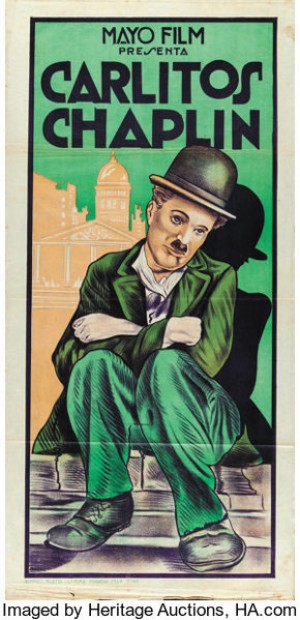This column originally appeared in September 2010.
Movie posters are growing in popularity as both a collectible and a legitimate art form. Since the first known poster, L’Arroseur Arrise appeared in 1895, collectors have looked upon them both a source of enjoyment and a wise investment.
The early 1900s release The Great Train Robbery was the first American film to advertise with a poster. Copies of it are extremely rare, but it is of importance to collectors in that it established the acceptable standard size of 27” x 41”.
Posters from the early 20th century emphasized the studio name, as the concept of the “movie star” had not yet come into play. By the mid-1920’s the studios realized the public’s fascination with actors and actresses, and the stars names were added.
The posters from the 1920s are highly collectible. Many of them featured portraits of the stars painted by well know artist of the day. These beautiful hand painted posters have been known to bring thousands of dollars at auction. With the introduction of “talkies” in the late 1920s, the movie-going public grew from 60 million in 1927 to over 110 million in 1929. This increase in attendance created the need for posters to be produced at a faster rate. By 1920 hand painted posters were replaced by lithographs.
As movies worked their way into mainstream culture, the sophistication of the audience was considerably elevated. No longer content with the melodramas of the early years, the movie audiences of the 1930s demanded full length films, featuring cowboys, gangsters, and monsters. Competition among major studios was intense, but Hollywood rose to the challenge, producing many classics including the highly ambitious 1939 release Gone With the Wind. Posters from the original release seldom surface at any price and even those from the 1967 re-release will have you reaching deep into your pockets. From a collector’s point of view, one of the most significant events of the 1930s was the introduction of two types of movie posters, the full sheet and the half sheet.
The Great Depression hit the movie industry hard and the quality of posters dropped considerably. While still sought by collectors, posters from this era are considered to be of lesser quality than those of the previous decade.
War movies were the biggest draw of the 1940s. Paper was in short supply and the studios cut back on the number of posters they produced. In response, many stars made public appearances in support of the war effort — a move that was good for the country, and good for the movie industry.
Unrivaled as a source of entertainment for it’s first 50 years, the movie industry experienced a temporary setback with the introduction of television. Suddenly there was no need to leave home to be entertained. Comedians, cowboys and even major events were now as close as your living room. To draw their audience back to the box office, studios released such large scale epics as Ben-Hur and The Ten Commandments. The 1950s would also see the release of the first 3-D movies.
The 1960s were a time of change and unrest in America, providing a wealth of material for film makers. Gone was the innocence of the past, as posters displayed both sex and violence in their content. Beach party, Elvis and James Bond movies posters are collected as much for their documentation of a changing morality as they are for their artistic value. The major contribution of the 60s to the collector is the introduction of the glossy finish poster.
Condition and rarity are the two main considerations to valuing movie posters. One of the best ways to protect them is to display them. Specialists recommend using UV treated Plexiglas which not only guards from exposure to light, but also reduces weight against the poster. Until next time . . . Linda
Linda Kennett is a professional liquidation consultant specializing in down-sizing for seniors and may be reached at 317-258-7835 or lkennett@indy.rr.com



